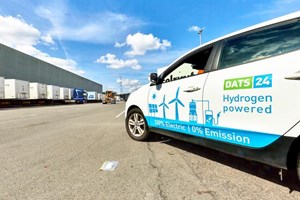News
H2-powered mobility in Europe shows operational benefits and technological readiness
A new report has examined the demonstration activities conducted between the early 2000s and the present aimed at promoting H2 mobility in Europe. The report concludes that, although the application of H2 technology to private and public transport systems is feasible, there are still challenges that need to be overcome.
Carried out under the Clean H2 Partnership and its predecessors, these demonstration projects focused on testing the capabilities of fuel cell electric vehicles (FCEVs), fuel cell electric buses (FCEBs), and associated H2 refueling Stations (HRS) to replace conventional vehicles.
The projects aimed to accelerate the adoption of fuel cell technology in the EU car and bus manufacturing industry, while also providing climate benefits. The efforts led to the successful deployment of over 1,300 FCEVs and more than 400 FCEBs from 2005 to 2023. This not only demonstrated the operational benefits and technological readiness of H2-powered transportation but also laid the groundwork for a pan-European H2 refueling network.
The projects have also generated valuable data for improving performance benchmarks such as key performance indicators (KPIs), well-to-wheel (WTW) analysis and total cost of ownership (TCO) models.
Activities related to FCEVs have successfully sparked interest from captive fleets, especially for high-mileage applications like taxi fleets seeking to expand their operations with FCEVs. Meanwhile, initiatives focused on FCEBs have increased involvement from regions and private contributions, demonstrating that H2 technology is a viable option for public transport systems.
However, the analysis also highlights some challenges persisting in this sector. These encompass stiff competition from battery electric vehicles, which capitalize on lower operational costs and technological advancements, as well as the increased H2 fuel costs resulting from the 2022 energy crisis.
Additionally, the supply chain for components remains weak, as manufacturers tend to respond to demand, which limits the possibility to expand spare parts inventory. To address these challenges, the study proposes a number of recommendations, including the implementation of long-term financial mechanisms, such as subsidies or tax incentives, to enhance the competitiveness of FCEVs and FCEBs and strengthen the European supply chain for H2 mobility components.
The recommendations also include the development of standardized methodologies for measuring and reporting fuel cell degradation and operational metrics, the expansion of the H2 refueling network, and continue investments in research and innovation, along with campaigns for public awareness. The analysis concludes that by implementing these recommendations, the EU can maintain its leadership in the transition to climate neutrality. H2 is a versatile energy carrier that can help the decarbonization of the EU’s transport system, especially in hard-to-decarbonize sectors such as heavy-duty transport.


